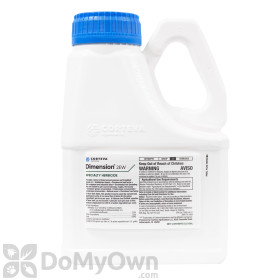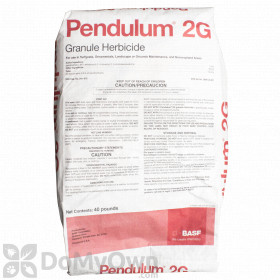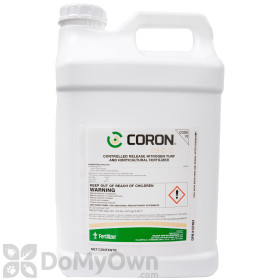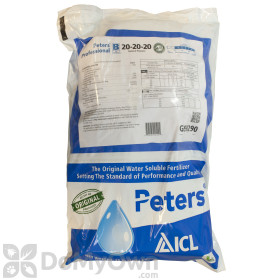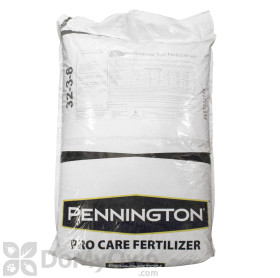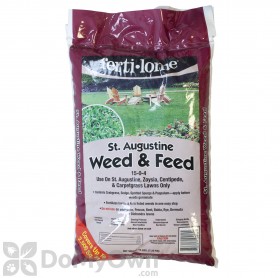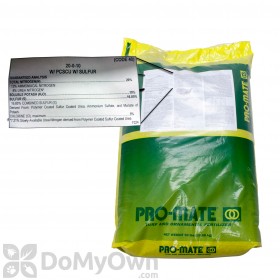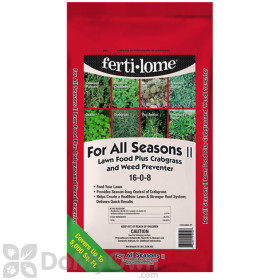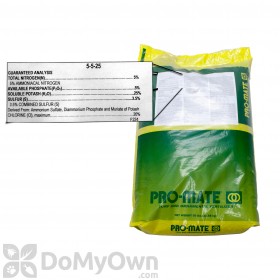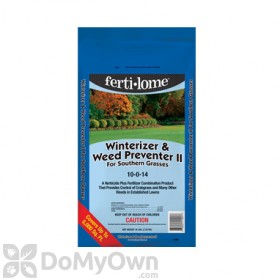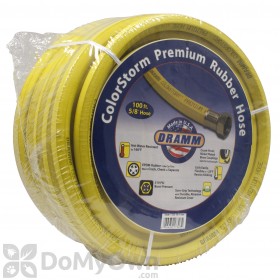
September
Tip
1
Apply Pre-Emergent Herbicides to Prevent Fall Weeds
Lawn pre-emergent herbicides can be applied in the spring and the fall, and now is the right time to begin fall applications to prevent winter weeds. Preventing and controlling these weeds now can help prevent big weed problems in the spring.
Products needed for Tip 1
Tip
2
Begin Fall Fertilizer Applications
If you choose to do a fall fertilizer application, you can begin this now through November. A fall fertilizer application will encourage root growth and development and will also help grass green up quickly in the spring, and is often the most helpful fertilizer application of the year.
Products needed for Tip 2
Tip
3
Consider a Weed and Feed Product
If you plan on doing a fertilization application as well as an herbicide application this season, and the timing coincides where you live, using a weed and feed product for turf and lawns can be very beneficial, allowing you to save time and money by applying one product for both weed control and fertilization.
Products needed for Tip 3
Tip
4
Keep Mowing Until Growth Stops
Continue to mow your lawn to maintain your desired grass height. The frequency of this may begin to slow, but keep cutting your grass until it stops growing.
Tip
5
Don't Forget to Water Your Lawn
You might think you can back off on irrigation for your fall lawn care, but it is important that your lawn continues to receive enough water. It not only encourages root growth before dormancy, but will help any fertilizer applications work most effectively and help your lawn stay healthy through winter.
Products needed for Tip 5
October
Tip
1
Apply Pre-Emergent Herbicide to Combat Winter Weeds
If you have not applied a pre-emergent herbicide to your warm season turf, now is a good time to do it. Contact your local extension office for more accurate timing for your specific area. Fighting winter weeds now can help prevent and lessen weeds in the spring.
Products needed for Tip 1
Tip
2
Rake Up Leaves and Other Debris
October generally marks the beginning falling leaves, and it is important to stay on top of raking and keeping debris (and piles of debris and leaves) off your lawn. Layers of leaves can trap in moisture and prevent airflow, which can promote disease, and piles of leaves left on your lawn can provide shelter for rodents and other pests.
Products needed for Tip 2
Tip
3
Monitor Lawn for Turf Diseases
The transition into the cooler weather of fall can create optimal conditions for the growth of certain lawn diseases like powdery mildew, which favors high humidity, cooler temperatures, and cloudy days, which often occur in fall. Make sure to check your lawn closely for any signs of disease on a regular basis so you can treat the disease before winter.
Tip
4
Consider Mowing Lawn Shorter
Fall does not mean you are done mowing - keep mowing until your lawn stops growing, but consider cutting it shorter to prevent snow mold and other fungal diseases. If your lawn has experienced snow mold in the spring before, cutting it shorter can help reduce chances of snow mold by reducing harborage for the mold spores. Start by lowering the mowing height gradually before cutting your lawn very short at the last mow of the year.
Tip
5
Keep Watering Your Lawn
Your lawn will still benefit from regular watering at this time, even though it is not actively growing as it was in the spring and early summer. Still aim for one inch of water a week, especially if you are still getting hot days, but after this month you will likely not have to water anymore.
Products needed for Tip 5
November
Tip
1
Fight Winter Weeds With Pre-Emergent Herbicides
If your lawn is prone to winter weeds, combat them early with a pre-emergent herbicide application, which will keep the weeds from growing. These products must be applied right as seeds germinate, and if they are not applied at the correct time of year, the product will not be effective. Contact your local extension office for a recommendation of proper timing for your area if you are not sure.
Products needed for Tip 1
Tip
2
Last Chance to Apply Late-Season Fertilizer
In many parts of the country, this is the last month to apply fertilizer before freezing weather. Your lawn continues to grow until temperatures dip below 40, and applying fertilizer late in the fall can help your grass make it through winter and emerge even healthier and stronger in the spring.
Products needed for Tip 2
Tip
3
Don't Let Your Lawn Get Long Before Winter
Your lawn is likely still growing this late into the year. Grass continues to grow as long as temperatures remain around 40 degrees, and your lawn still needs to be mowed to maintain your desired height. Letting your grass grow above three inches before winter can invite burrowing animals like voles and other rodents to take shelter in the tall grass, where they can negatively affect your lawn by causing dead spots and damage.
Tip
4
Continue to Rake and Clear Lawn of Debris
It might be tempting to let those leaves lie, but raking up all leaves, dead plants, and other plant matter is important, because too many leaves or piles on your turf can trap in moisture and prevent airflow, which creates a good environment for disease and can cause damage to your grass, especially if snow falls on top of the leaves and other matter.
Tip
5
Put Away Lawn Furniture, Toys, Etc. to Prevent Lawn Damage
Leaving items such as lawn furniture, toys, planters, tools, and other miscellaneous items laying around your yard over the winter can cause the grass underneath these items to yellow, brown, or die. The weight of these items, compounded with the weight of possible snow, can cause damage. Simply put these items away for the winter and bring them out again in the spring.
206 of 208 people found this article informative and helpful.




